A Voluntary Fishing Accord
Simple actions we can all take to conserve fish stocks
Let's put the big ones back
Taking big snapper and big crayfish out of an area lets kina run rampant.
Putting the big snapper and big crayfish back is one thing we can do to keep our shallow reefs healthy.
- Big snapper and big crayfish deal to kina, keeping their population in check. Smaller snapper and crays can't do that job.
- When these big predators are removed from an area, kina numbers explode.
- Kina eat kelp.
- Left unchecked, kina munch through kelp forests, sometimes as deep as 8 m, leaving bare rock - kina barrens
- Kelp forests are the nurseries of the sea. When they are gone vital habitat for food, for cover and breeding is lost.
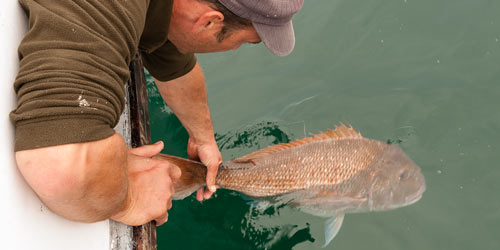
One big fish a day
Catching kingfish, hapuka or bass?
How about limiting our take home catch to just one big fish in total per angler per day?
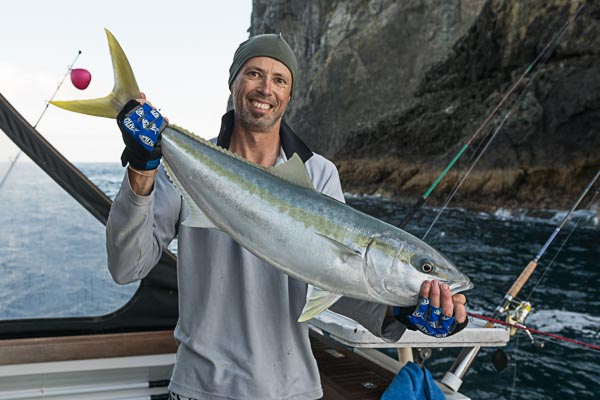
Leave our scallop dredges in the garage
Snorkel for scallops, tank dive if we must, but please let's leave our dredges in the garage. It's not a good method of fishing for these guys.
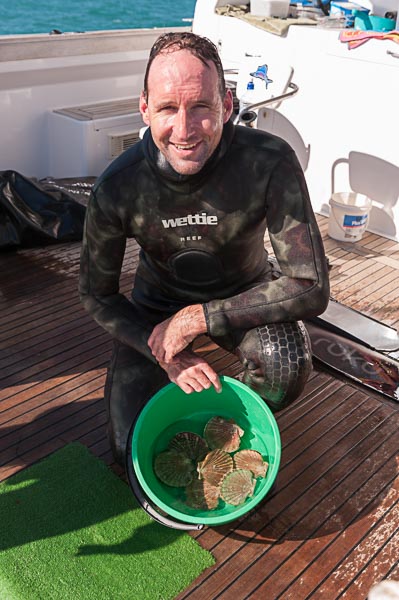
Release em' carefully
We throw back a lot of undersized fish nowadays. Handling and releasing them carefully increases their chances of surviving to be big!
MPI put out a great brochure on best-practice. Hit the download button below...
- Remove fish from the water only if you have to
- Wear cotton or rubber gloves or at least wet your hands
- Lie fish on a soft wet surface if you need to handle them out of the water
- Change to a larger hook size if you are catching a lot of undersized fish
- Minimise the time fish are out of the water
- Remove the hook carefully from mouth-hooked fish
- Cut the line for gut-hooked fish
- Return fish gently to the sea
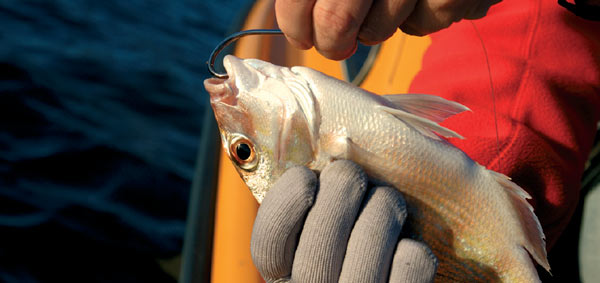
Take enough to feed our whanau
Let's feed our whanau, not our whole neighbourhood!
And if you don't want the heads - give them away on this site: https://www.freefishheads.co.nz/
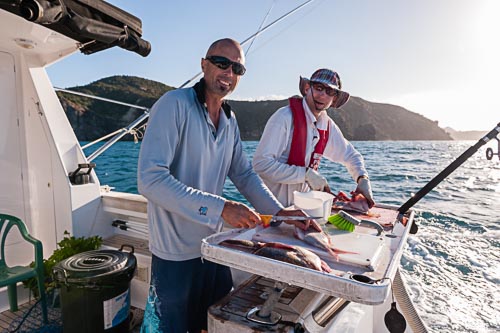
Fishing in deep water?
Fishing in shallower water enables release with less harm to the fish.
"Depth of capture was by far the most important factor affecting release mortality. Mortality increased from an average of 3.42% of fish caught in the shallows (5, 15 and 30 m) to 69.0% of fish from the deeper waters (45 and 65m)."
Below is a summary from this Australian study: Lenanton, R., St John, J., Wise, B., Keay, I. and Gaughan, D. 2009. Maximising survival of released undersize west coast reef fish. Final report to Fisheries Research and Development Corporation on ProjectNo. 2000/194. Fisheries Research Report No. 191. Department of Fisheries, Western Australia. 130p. Cages were used to investigate the mortality after catch and release angling of snapper Pagrusauratus (Family Sparidae), a recreationally and commercially important demersal species found throughout temperate coastal and shelf waters of Australia. Overall, 65.4% of the 604 snapper caged in the experiment survived release. Depth of capture was by far the most important factor affecting release mortality. Mortality increased from an average of 3.42% of fish caught in the shallows (5, 15 and 30 m) to 69.0% of fish from the deeper waters (45 and 65m). Due to the practicalities of catching and caging fish while working at sea it was necessary to mix fish of different sizes in cages and to have different quantities of fish in cages. However, while there was increased mortality associated with increased quantities of fish in cages, this did not affect the result of increased mortality with depth. Venting, hook pattern, hook location, number of days caged, size of fish (TL in cm) and swimming at release did not affect mortality significantly. Although mortality in gut-hooked fish was almost three times (91.7%) that of mouth-hooked fish (33.6%), the proportion of gut-hooked fish in the total catch was small (1%of circle hooks and 3% of J hooks). The clear depth stratification in rates of mortality of snapper indicates that Legal Minimum Length (LML) and or bag limits are suitable management regulations for shallow coastal areas, but that their usefulness decreases at deeper offshore locations. This bodes well for the management of snapper dwelling in the numerous shallow bays, sounds and gulfs around Australia that have well defined boundaries suitable for defining separate management zones. In contrast, deeper offshore fisheries need to consider management strategies that include alternatives to size and bag limits, and would certainly need to include estimates of post-release mortality when attempting to manage a fishery through controlling total fishing mortality.

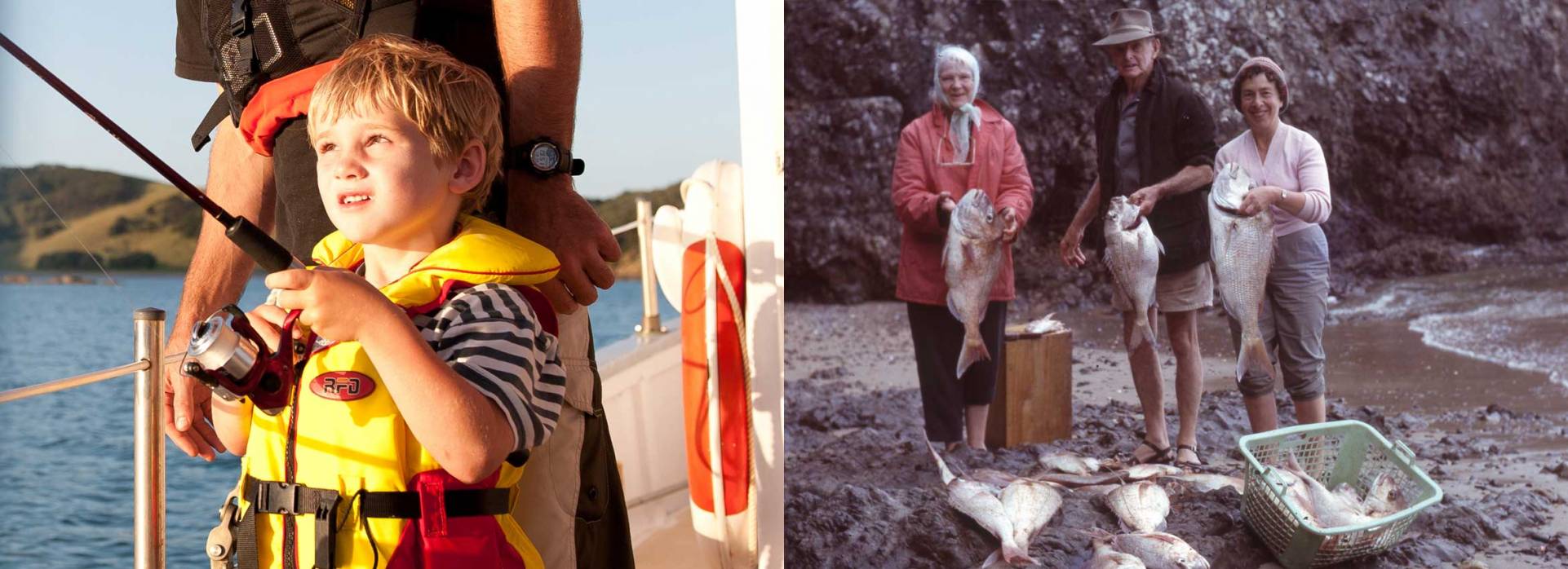

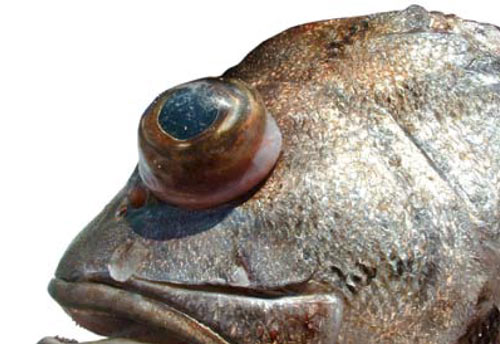
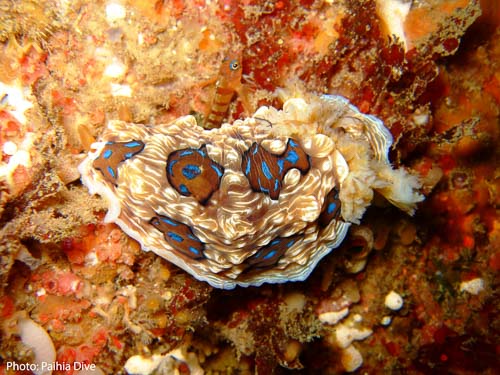 All of us with an interest and love of Tangaroa, let's work together and take on the challenge of marine protection for the Bay.
All of us with an interest and love of Tangaroa, let's work together and take on the challenge of marine protection for the Bay.